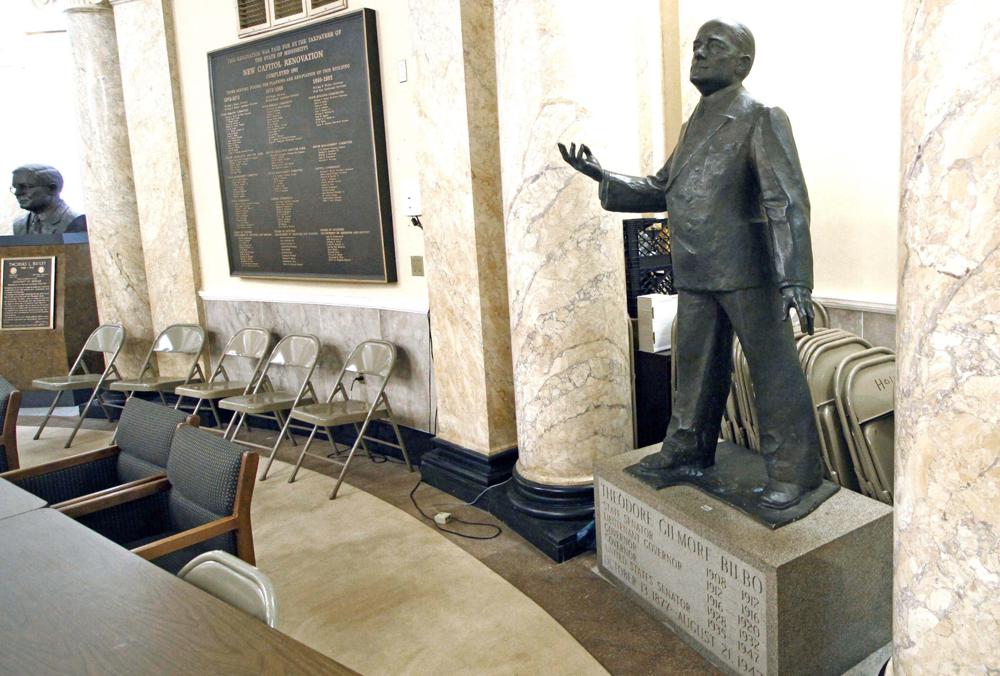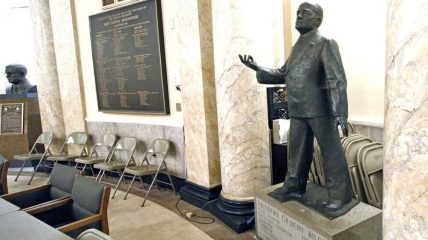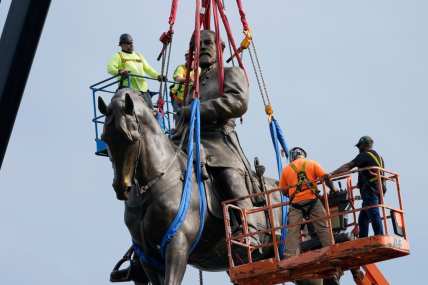‘Where’s Bilbo’ mystery solved; statue of racist Mississippi governor stashed in a closet
Mississippi State House Clerk Andrew Ketchings told reporters Bilbo statue's presence had been bothered him for years "because of everything he stood for."
The location of a missing bronze statue of early-20th century Mississippi Gov. Theodore Bilbo — a notorious white supremacist — was revealed last week.
Mississippi State House Clerk Andrew Ketchings told reporters on Wednesday that a work crew moved the statue of Bilbo in the state Capitol from the center of the Jackson-based building where it stood for decades into a closet behind one of the building’s elevators. The move occurred in October.
The five-foot, two-inch statue has since been covered with a fire-resistant tarp. The move cost Mississippi taxpayers an estimated $4,000 – $5,000, Ketchings told the AP.
“It was purely my decision, 100%,” Ketchings said.
Ketchings is a former Republican member of the Mississippi state house whose current position as statehouse clerk gives him authority over space maintenance at the Capitol building, according to the AP.
He said the Bilbo statue’s presence in the capitol had been bothered him for years “because of everything he stood for.”

“It was way past time to do it,” he said regarding the move. “I just read through a lot of his quotes that were offensive.”
Bilbo, who died in 1947, was a Democrat who served two terms as governor of Mississippi from 1916-1920 and from 1928-1932, according to the National Governors Association.
He was also a Ku Klux Klan member who later served as a U.S. Senator. Bilbo’s support for segregation, opposition to Black American voting rights, and fiery anti-Black speeches made him infamous during his 30-year political career.
Black Mississippi lawmakers have long asked for the statue of Bilbo to be removed from the Capitol, according to the AP. The room in which the statue last stood was a frequent meeting place for the Mississippi Legislative Black Caucus.
The decades-long push to remove Confederate statues and other racist monuments from public spaces has gained traction in the aftermath of the deadly 2017 Unite the Right white supremacist rally in Charlottesville, Virginia, and the 2020 police murder of George Floyd in Minneapolis.
TheGrio is now on your TV via Apple TV, Amazon Fire, Roku, and Android TV. Also, please download theGrio mobile apps today!


